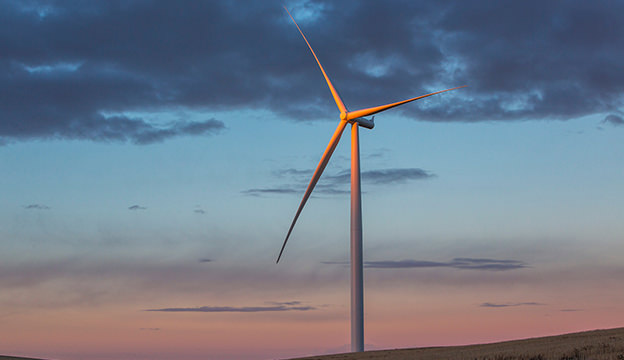
As energy costs rapidly escalated, so, too, has interest in tapping the wind for sustainable, residential-scale wind-energy systems.
Still, even with innovative equipment breakthroughs and the growing number of green-collar technicians to assist in their installation, wind turbines are sometimes met with less-than-enthusiastic neighbors, skeptical of the benefits of wind energy.
There are realities that come with owning and operating a renewable-energy system.
After all, you’re your own power company in much the same way many hobby farmers are their own food company, relegating a trip to the supermarket for those staples that can’t be grown or raised on the farm.
The following offers an overview of the pros and cons of harvesting your own wind energy with a grid-tied wind turbine, like we do at Inn Serendipity, our farm and bed-and-breakfast in Browntown, Wisc.
(This piece does not evaluate commercial size turbines or those greater than 20 kW.)
Pros of Wind Energy
- Wind is renewable, freely available and tax-free. Farm businesses may even be eligible to receive a wind-production tax credit.
- No pollution or waste is generated by the system’s operation.
- Depending on the wind turbine selected, the equipment can be low-maintenance. In general, the more complex the system and the moving parts, the more likely repairs or maintenance will be needed. (Note: After five years, our 10 kW Bergey’s generator and inverter required no special repair.)
- A growing number of utility companies offer simple net metering contracts. (More than 40 states have net metering according to the Database of State Incentives for Renewables and Efficiency.) Under net metering, a wind energy system owner would receive credit for at least a portion of the electricity they generate.
- There are numerous statewide wind-energy financial incentives, according to Database of State Incentives for Renewables and Efficiency.
- Numerous national manufacturers of wind turbines have proven reliability track records, including Bergey, Proven, Abundant Renewable Energy, Wind Turbine Industries Corp., and Southwest Windpower, according to John Hippensteel, and engineer with Lake Michigan Wind and Sun, Ltd.
- Land within the acre or two needed for a residential wind turbine can still be used for pasture, gardens or other agricultural purposes.
- In our experience—as as noted by the American Wind Energy Association, the Midwest Renewable Energy Association and others—as of 2009, wind is the most cost-effective source of renewable energy, especially when compared to solar electric (photovoltaic) systems. Depending on the system and electricity rates, which continue to rise, your investment might break even in about 17 years.
Cons of Wind Energy
- Wind is highly variable. Wind speed varies by numerous factors, including weather, location and season, so not all places are appropriate for wind energy. At Inn Serendipity, we rarely overproduce electricity during the summer months.
- Equipment requires a sizeable upfront investment, depending on the size of system selected. To meet the needs of a modest hobby farm, like ours (after energy conservation and efficiency efforts have been exhausted), a 10 kW system that costs $40,000 to $70,000 would be needed to become a net producer of electricity on an annual basis.
- Evaluating projected wind-system output is difficult due to variability of turbine design and production conditions.
- “Wind turbines are not created equally,” Hippensteel says. “Some require considerably more maintenance and service than others.”
- Living with a renewable energy system demands a more energy-mindful way of living. After any big storm, we check our inverters in much the same way that our farmer neighbors check on their animals.
- State or municipal zoning laws may result in expensive hearings or possibly prevent you from erecting a tower of sufficient height.
- NIMBYism: Some neighbors may voice objections to the sight or sound of a swishing turbine.
- While possible harm may be done to birds, research studies, such as one by the National Wind Coordinating Committee, have found that collisions with windows in buildings and vehicles, capture by outdoor cats, as well as poisoning due to chemicals cause far more avian fatalities than encounters with residential wind systems.
- Depending on location, securing capable technicians or service workers for possible repair or maintenance can add significant costs to owning a system.





2 replies on “Wind Energy Pros And Cons”
[…] Wind Energy Pros And Cons […]
[…] Wind Energy Pros And Cons […]